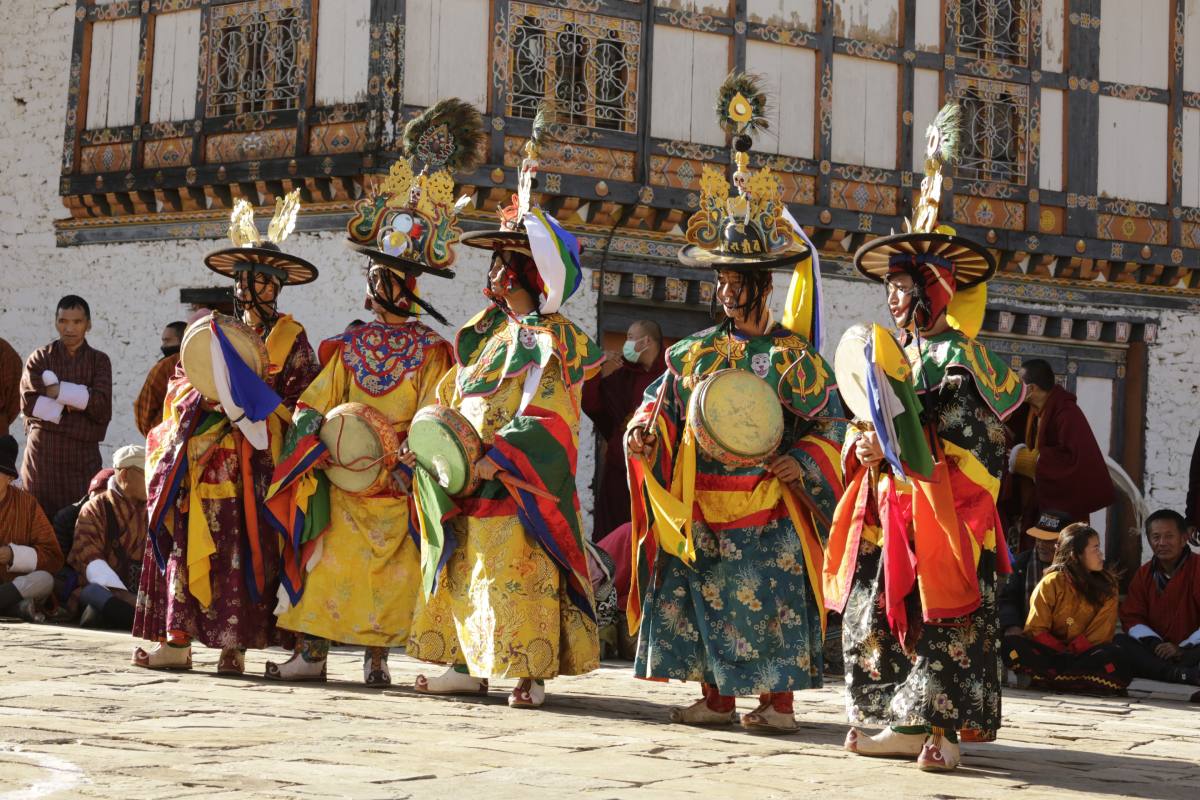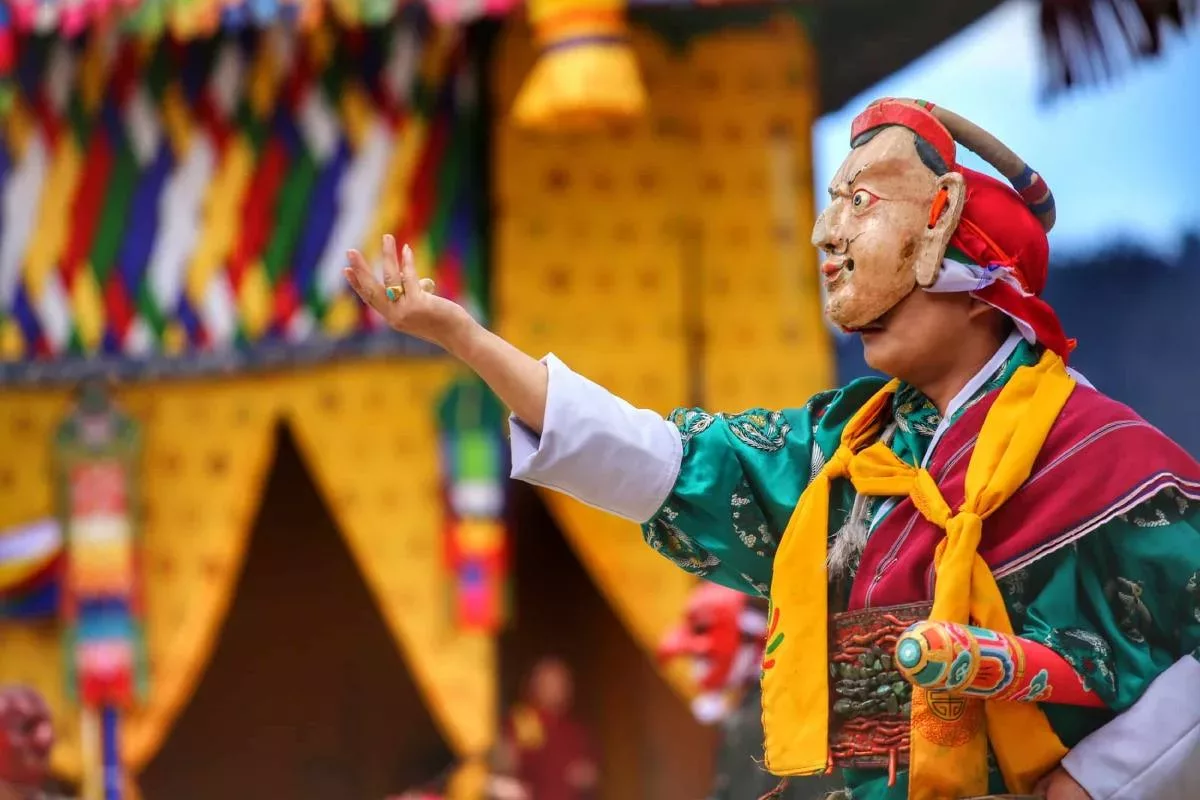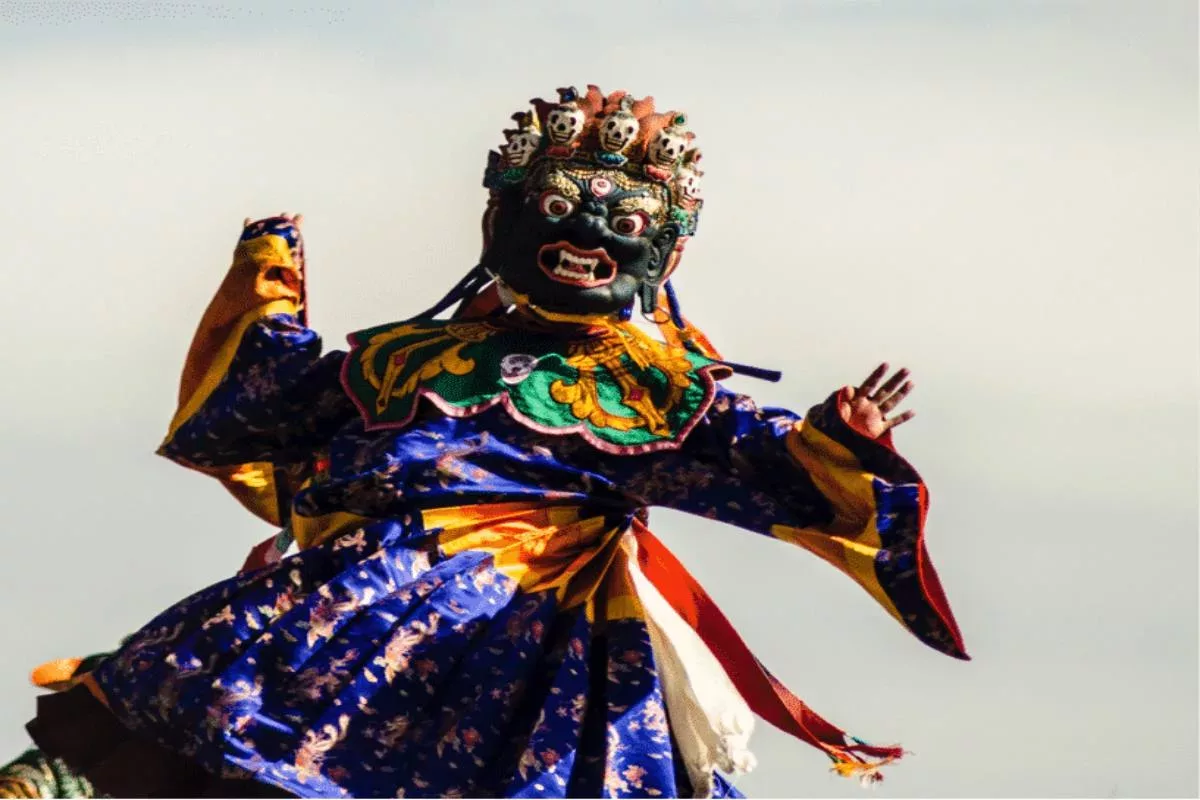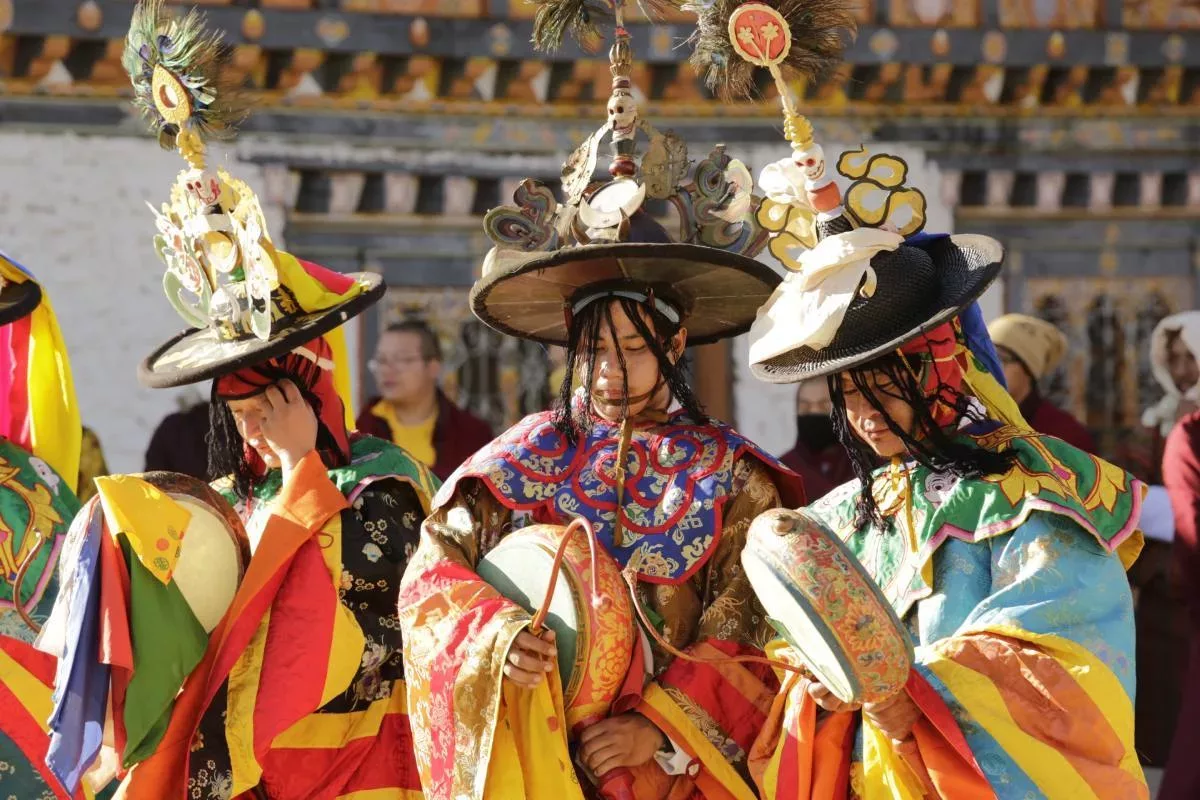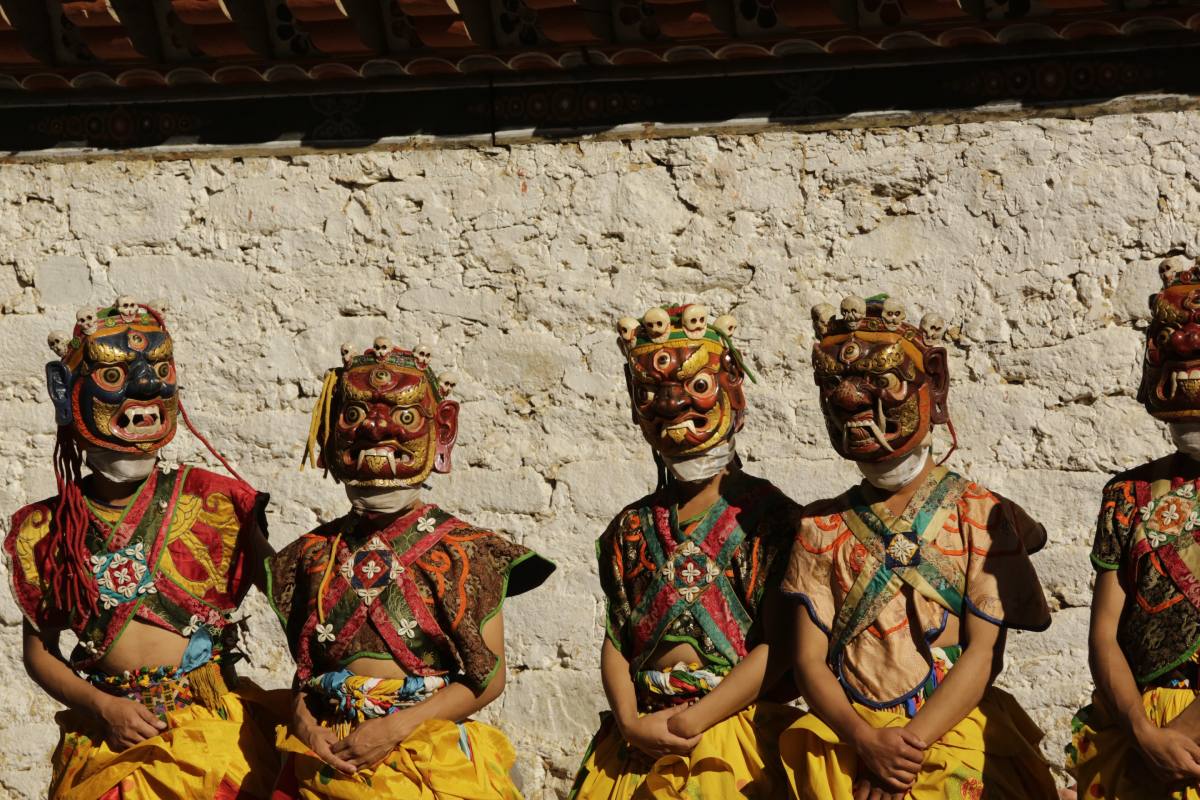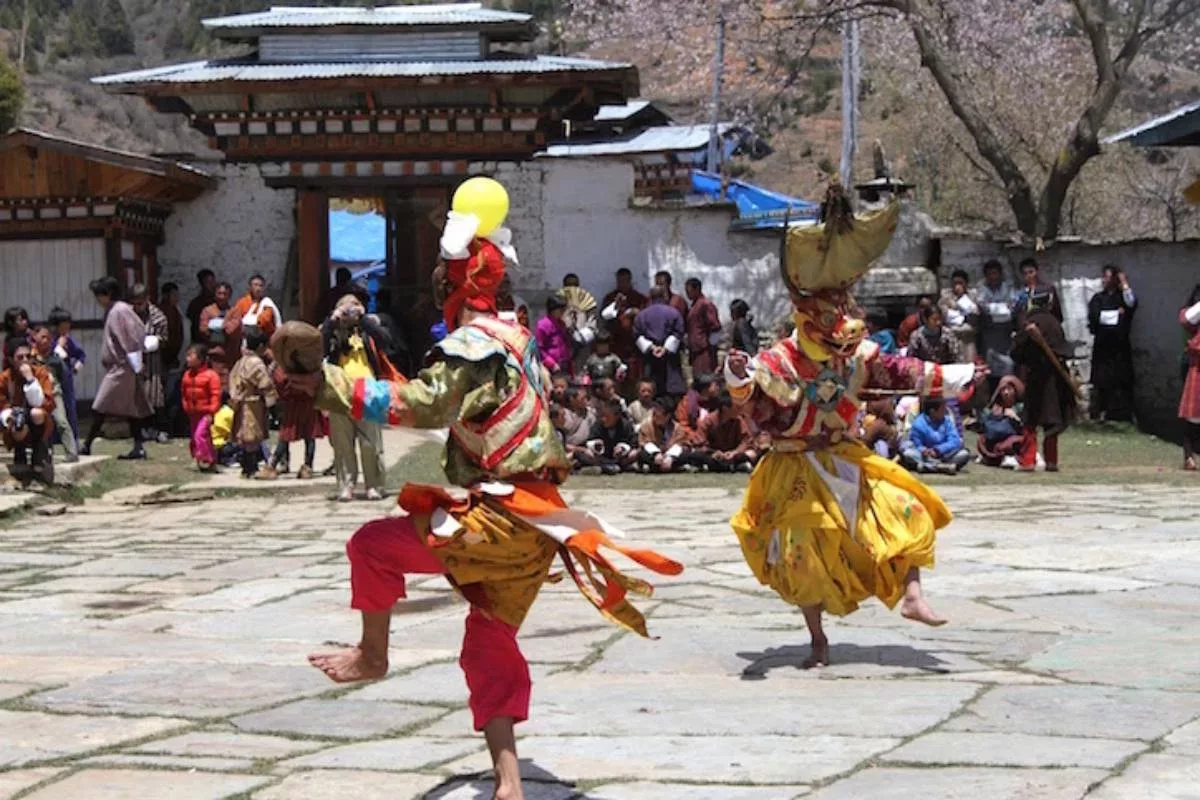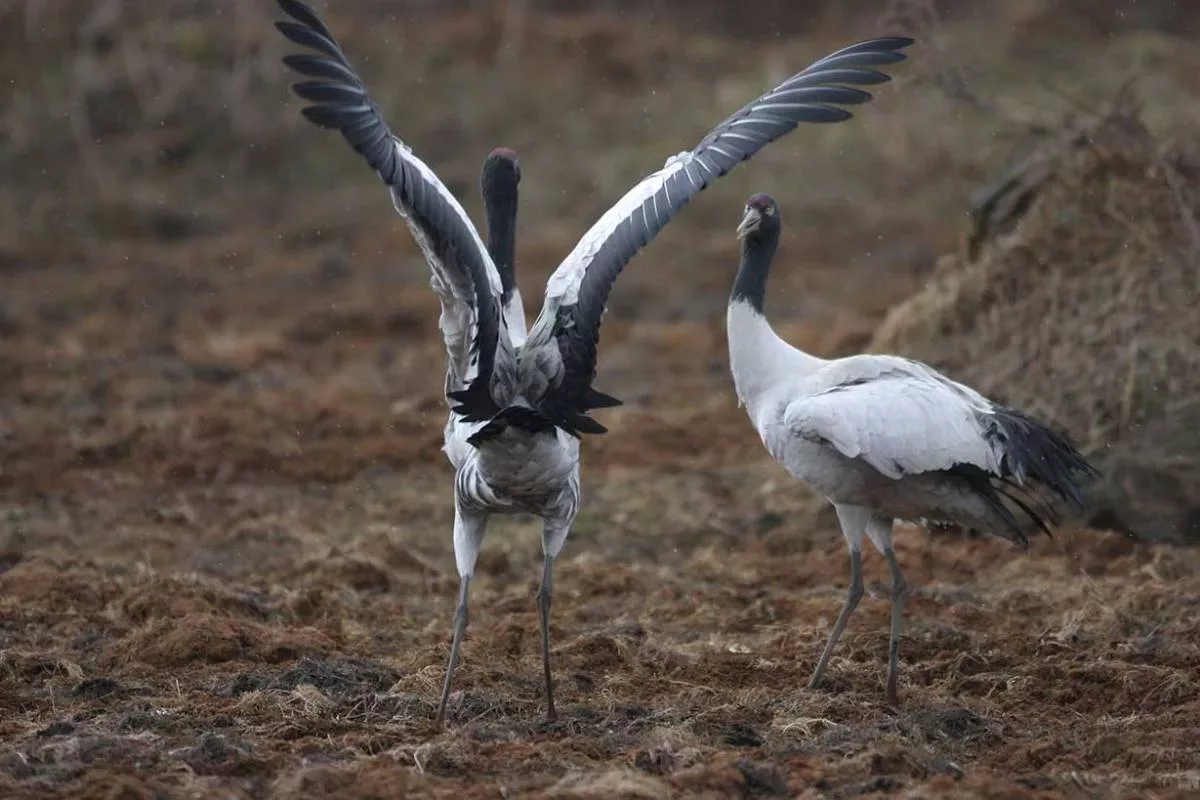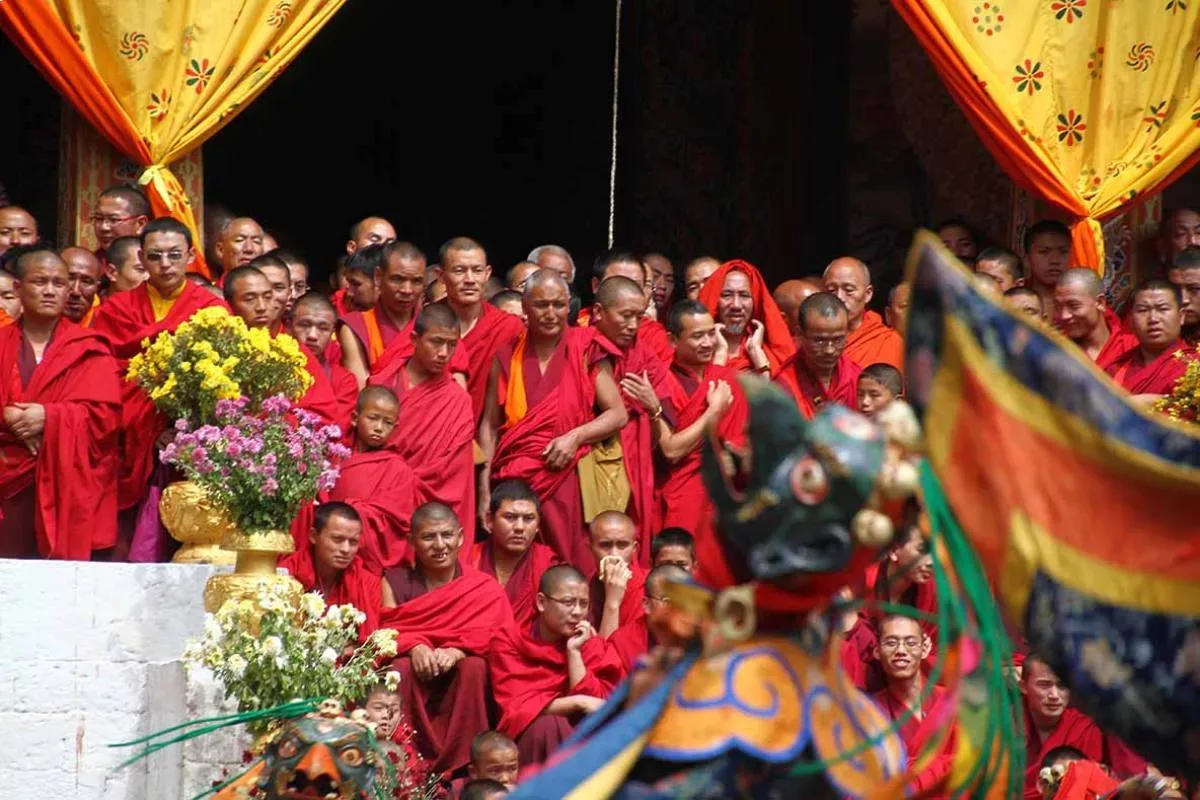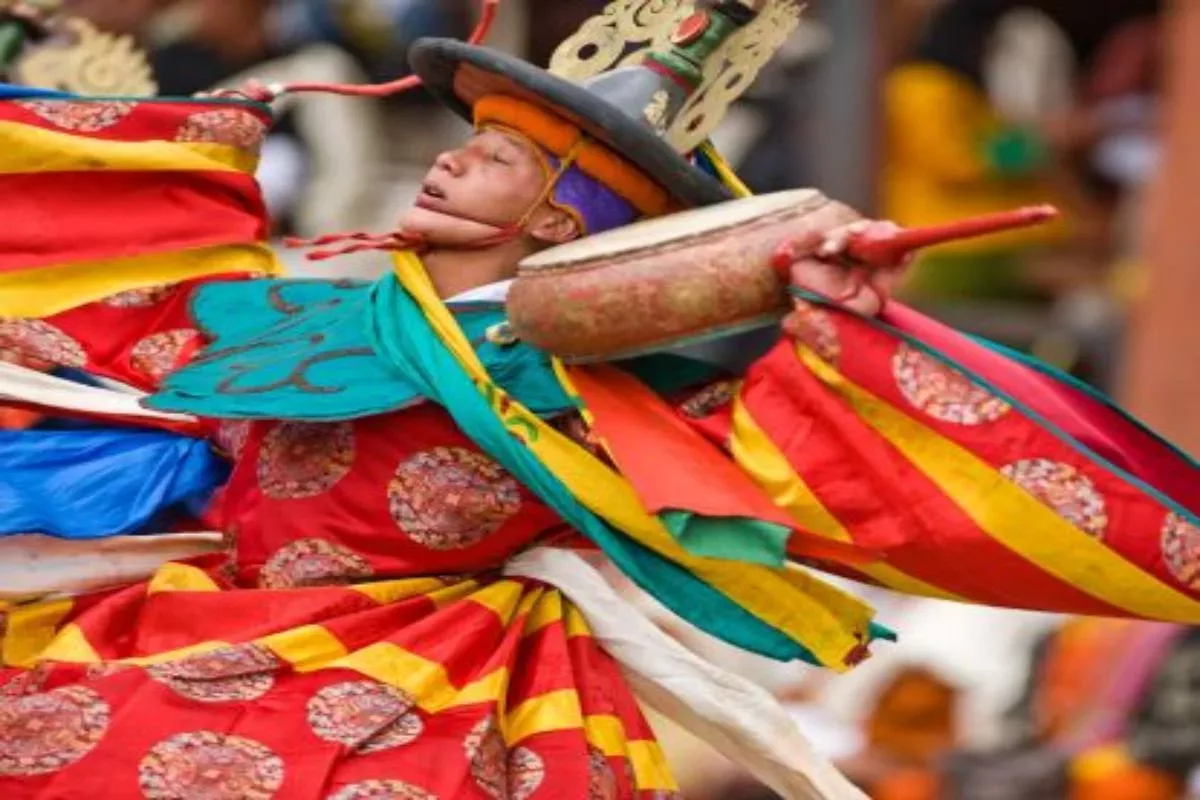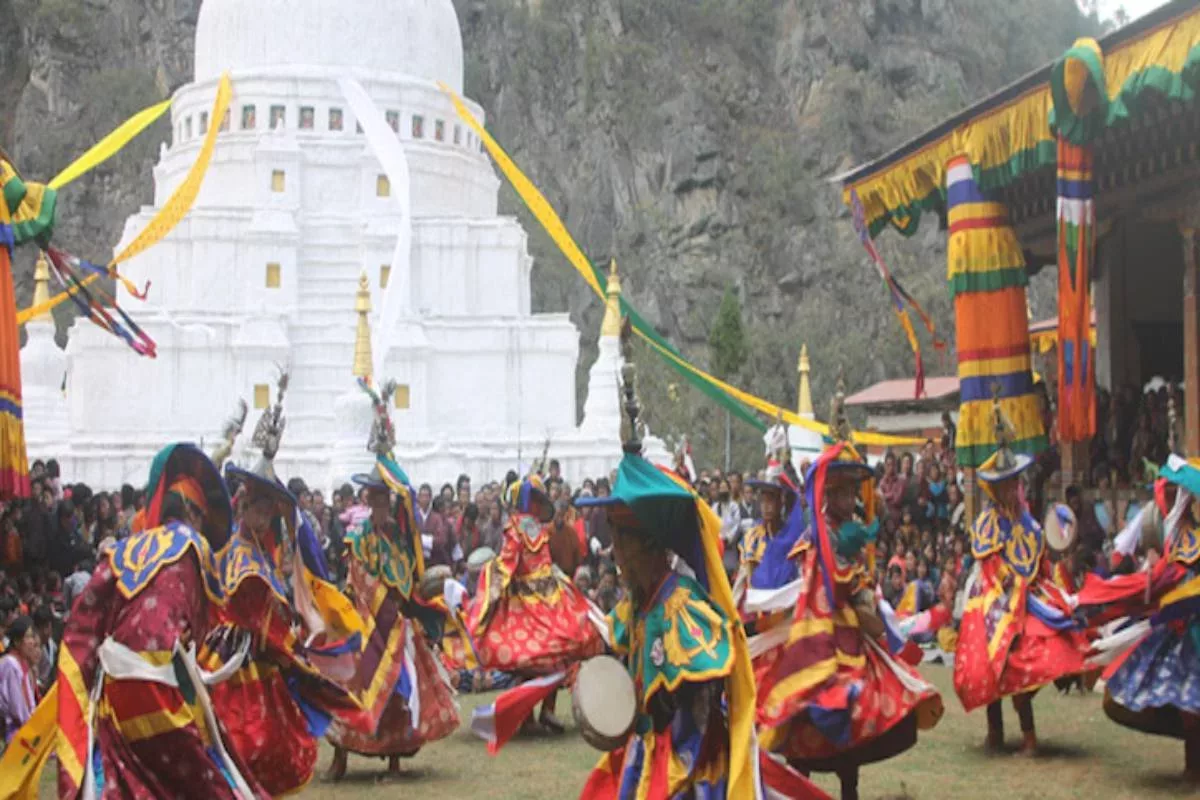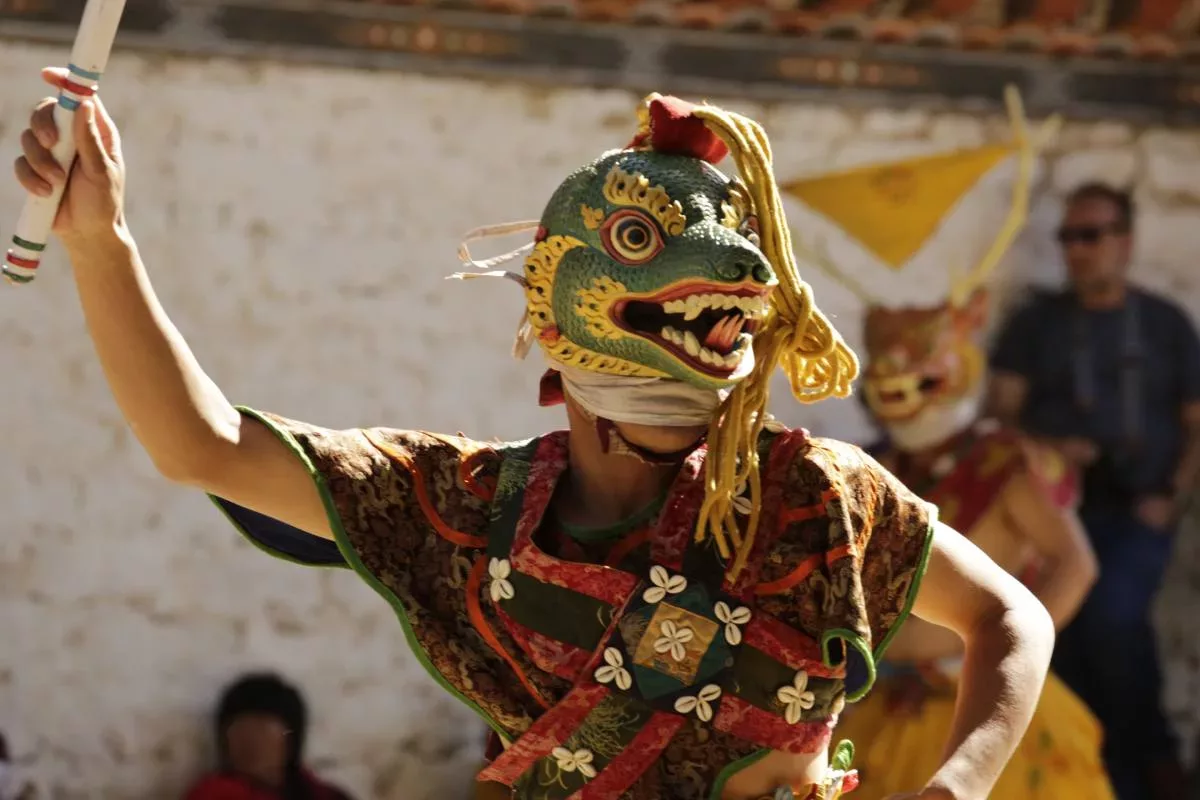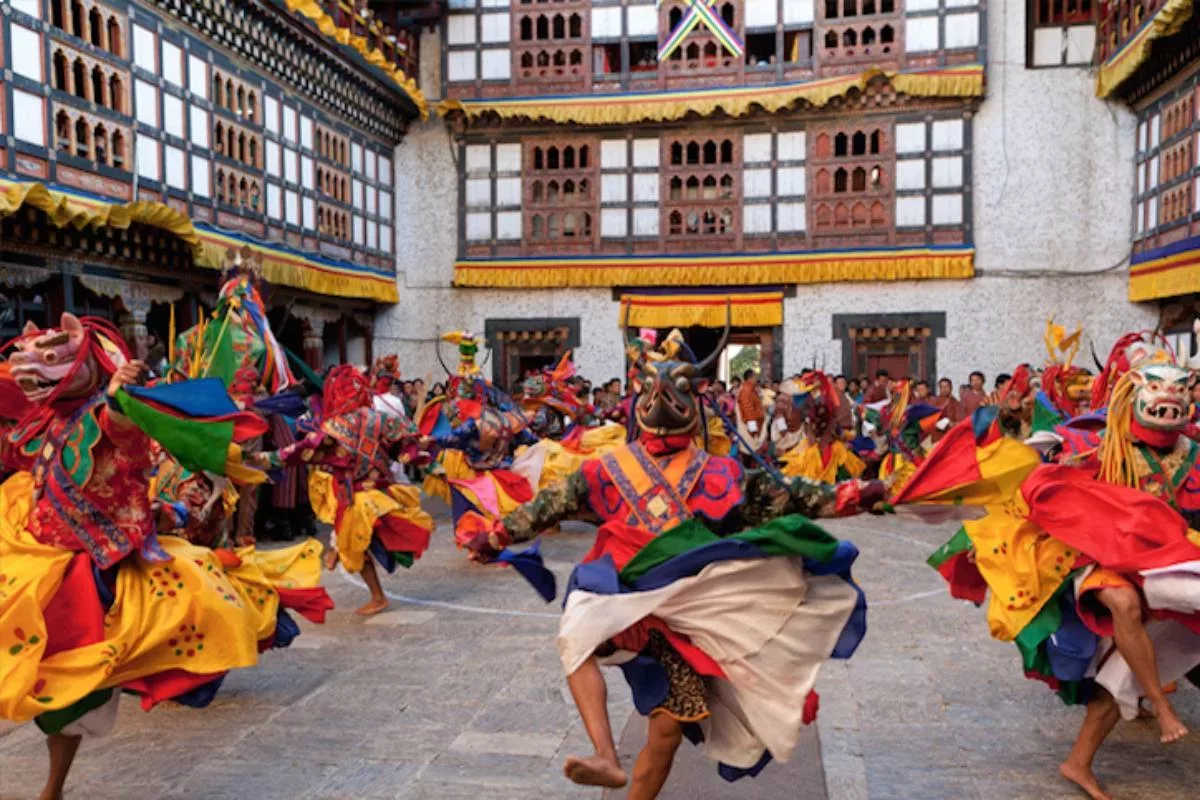Detailed Program
The flight to Paro is one of the most spectacular flights among all the mountain flights. You can glimpse a spectacular view of Mount. Everest, Kanchenjunga, and other popular peaks in Bhutan such as Jomolhari, Jichu Drake and Tsrim Khang. On arrival at the Paro International Airport, our Host will receive you and drive you through one of the most fascinating valleys of Bhutan to your hotel for an overnight halt.
Afternoon, visit Drukgyel Dzong; a ruined fortress located about 14 km away from Paro town. It was built in 1649 by Zhabdrung Ngawang Namgyel to commemorate the victory of Bhutan over Tibetan invaders, led by the Mongolian warlord, Gushri Khan in 1644. Drukgyel Dzong captured the eyes of western visitors when it was featured on the cover of the National Geographic magazine in 1914. Above the ruined fortress, appears the towering peak of Mount Jomolhari, the “mountain of goddess” which is about 7,315m high. The fortress served as an administrative center until 1951 when a fire caused by a butter lamp destroyed it. The ruins still attract a lot of tourists for their rich history and glorious past.
Then visit Kyichu Lhakhang (Monastery), it is one of the two oldest monasteries built in the seventh century by King Songtsen Gampo of Tibet in Bhutan. It is considered one of the holiest places in Bhutan as it marks the advent of Buddhism in the country. Kyichu Monastery is located between Drukgyel Dzong and Paro town. Evening, take a leisurely walk around Paro town.
Overnight halt in the hotel.
Places and attractions:
- Rinpung Dzong
- Drukgyel Dzong
- Taktshang
- Kyichu Lhakhang
- Kila Gompa
- Dungtse Lhakhang
- Tachog Lhakhang
- Dzongdrakha
Accommodation options:
After breakfast, hike to Taktsang Temple meaning ‘Tiger’s Nest’, because Guru Rinpoche (Precious Buddhist Saint) is said to have flown to the site of the monastery on the back of a tigress and then meditated in a cave for three months in the eighth century. It is precariously perched on the right side of a cliff, at 2950 meters above sea level and 900 meters above Paro valley. It is considered one of the holiest places of pilgrimage for the Buddhist world today.
It is about 4-5hours walk up and down. Lunch at Taktsang cafeteria. Evening, take a leisurely walk around Paro town.
Overnight halt in the hotel.
Places and attractions:
- Rinpung Dzong
- Drukgyel Dzong
- Taktshang
- Kyichu Lhakhang
- Kila Gompa
- Dungtse Lhakhang
- Tachog Lhakhang
- Dzongdrakha
Accommodation options:
Morning, visit Ta Dzong (now National Museum); originally built as a watch tower of Paro Dzong in 1951 it now converted to the National Museum in 1968. It has a unique and varied collection of ancient paintings, textiles, weapons and armor, bronze statues, old household objects, exquisite postage stamps, jewelry, and many other decorative arts.
Then visit Paro Dzong (Fortress); also known as Rinpung Dzong, which means ‘fortress of the heap of jewels. It was built in 1646 by Zhabdrung Ngawang Namgyel and is one of Bhutan’s most impressive Dzongs in the country that depicts the finest examples of Bhutanese unusual architecture. It serves as the administrative center of the Paro district and also houses the state monastic community. The courtyard of the Dzong serves as a venue for Paro Tshechu (festival), held annually in spring.
After lunch, drive to Thimphu (about 1 hour and 30 minutes drive). En route, visit Semtokha Dzong, the first fortress built by Zhabdrung Ngawang Namgyel in 1627 among the series of fortresses built by him in the 17th century in Bhutan. About 4 miles drive from Thimphu; this fortress is situated on a lofty ridge and now houses the educational institute for Buddhist studies.
On arrival, transfer to hotel for overnight halt.
Places and attractions:
- Tashichho Dzong
- Semthoka Dzong
- Dochu La Pass
- Memorial Chorten
- Changangkha Lhakhang
- Zangdopelri
- The Tallest Buddha Image
- Tango And Cheri Monasteries
- The Handicrafts Emporium
- Traditional Medicine
- Zorig Chusum Institute
- National Library
- Weekend Market
- Botanical Garden
- Thadrak Goemba
- Tashigang Goemba
- Chizhing Samtencholing Lhakhang
Accommodation options:
Morning, visit Memorial Chorten (Stupa), one of the most religious stupas visible in Thimphu. The religious paintings and complex tantric statues inside the monument reflect both peaceful and wrathful aspects of Buddhist deities. It was built in 1974 in memory of the Third King, Jigme Dorji Wangchuck, who is popularly considered the Father of Modern Bhutan.
Then visit Changangkha Lhakhang (Monastery), which was built in the 15th century by the high saint Phajo Drugom Zhigpo. It is a monastery of Compassionate Buddha Chenrezig. After that visit Zulikha Nunnery, to see nuns reciting prayers and then visit the National Library which houses a vast collection of ancient Buddhist manuscripts and texts including the imprinted and archaic text of Bhutanese history.
The library also has research documents and printing blocks for prayer flags. You can visit Traditional Painting School, a center where children learn traditional drawing and painting, woodcarving, sculpture, and other forms of traditional arts. On a visit, one can view the students at work. Then have a visit to the Heritage Museum, the living farmhouse of the 19th century depicting the harmonious living style of the Bhutanese family with the domestic animals on the premises.
After lunch, visit Mini Zoo to see Bhutan’s national animal Takin and then drive farther up to Radio Tower to catch a spectacular glimpse of Thimphu valley. Take a gentle walk amid colorful prayer flags that dot the beautiful landscapes to experience the breath of spirituality. Then visit the Traditional Medicine Institute, where the rich herbal medicine found abundant in Bhutan is prepared and dispensed. The institute also researches the use of medicinal herbs and plants and operates a trial experiment on the premises. After that, you can stop to visit the Textile Museum and Handicrafts Emporium, where various products of Bhutanese arts and crafts are displayed and can be purchased as well.
After that, visit Trashichhoedzong, the “fortress of the glorious religion”. Zhabdrung Ngawang Namgyel initially erected the Dzong in 1641 and later the third king Jigme Dorji Wangchuk rebuilt its present form in 1965. It was built traditionally, without using nails and architectural plans. It is also the home of the throne room of His Majesty the king of Bhutan, the summer residence of the central monastic body and ministries, and various government organizations.
Overnight halt in the hotel.
Places and attractions:
- Tashichho Dzong
- Semthoka Dzong
- Dochu La Pass
- Memorial Chorten
- Changangkha Lhakhang
- Zangdopelri
- The Tallest Buddha Image
- Tango And Cheri Monasteries
- The Handicrafts Emporium
- Traditional Medicine
- Zorig Chusum Institute
- National Library
- Weekend Market
- Botanical Garden
- Thadrak Goemba
- Tashigang Goemba
- Chizhing Samtencholing Lhakhang
Accommodation options:
After breakfast, drive to Punakha and Wangdue (about 2 hrs drive). En route, halt at Dochula pass (10500 feet) to see the spectacular view of the snow-capped eastern Himalayan Mountains.
En route attends full-day Rhododendron Festival at Lampelri Botanical Garden. Lunch at Lampelri Botanical Park. Take a short hike through Rhododendron Park. Evening, drive to Punakha.
Overnight halt at hotel.
Places and attractions:
- Punakha Dzong
- Khamsum Yulley
- Talo Goenpa
- Nalanda Buddhist College
- Chorten Nyingpo Lhakhang
- Sangchen Dorji Lhuendrup
- Limukha Village
- Ritsha Village
Accommodation options:
Morning, visit Khamsum Yulley Chorten (Stupa) built by Her Majesty the Queen Ashi Tshering Yangdon Wangchuk. It’s a short pleasant hike across the rice field to the hilltop. Once you reach there, you can catch a stunning view of the beautiful villages in the valley. The stupa houses complex tantric statues and religious paintings depicting Bhutan’s rich culture and traditions, marvelous arts and crafts, history, and Buddhist religion.
Then visit Punakha Dzong (Fortress), it was built in 1637 by Zhabdrung Ngawang Namgyel to serve as the religious and administrative center of the region. It is located strategically between the confluence of Pho Chu (Male River) and Mo Chu (Female River). The Dzong was damaged by an earthquake, fire, and flood many times and destroyed many historic documents. However, the Dzong has been fully restored to its original splendor by the present king and it serves as the religious and administrative center of the region.
After lunch, visit Chimi Lhakhang (Monastery), a revered temple popularly recognized as a pilgrimage site for childless couples to receive blessings. Situated on a hillock in the center of the valley, it is about a 20-minute pleasant walk across the rice fields from the road. Ngawang Chogyel built the temple in the 15th century after the “Divine Madman” Lam Drukpa Kuenley built a small stupa on the site.
Overnight halt in the Hotel.
Places and attractions:
- Punakha Dzong
- Khamsum Yulley
- Talo Goenpa
- Nalanda Buddhist College
- Chorten Nyingpo Lhakhang
- Sangchen Dorji Lhuendrup
- Limukha Village
- Ritsha Village
Accommodation options:
Morning, drive to Gangtey (about 3 to 4 hours drive). Upon arrival check into the hotel. After lunch, visit Gangtey Gompa built on the ridge overlooking the beautiful wide valley of Phobjikha. Pema Thinley, the grandson of Terton Pema Lingpa, the popular Nyingmapa saint of Bhutan, founded it.
The pristine green valley is also the winter residence of rare and endangered black-necked cranes that migrate from Tibet to Bhutan in late autumn in a group of 200 to 300. Evening, take a leisurely walk across the beautiful Phobjikha valley. Evening, take a leisurely walk across the beautiful Phobjikha valley.
Overnight halt in the hotel.
Places and attractions:
- Dargay Goemba
- Gangtey Gompa
- Temple Of Sha Radap
- Gaselo & Nahee Village
- Adha And Rukha Village
- Shaa Region Of Wangdiphodrang
- Bhey Langdrag Nye
Accommodation options:
Morning, drive to Paro (about 6 to 7 hours drive). En route visit Wangdue Town. Upon arrival, check into the hotel for an overnight halt. Evening, stroll through town.
Overnight halt in the hotel.
Places and attractions:
- Rinpung Dzong
- Drukgyel Dzong
- Taktshang
- Kyichu Lhakhang
- Kila Gompa
- Dungtse Lhakhang
- Tachog Lhakhang
- Dzongdrakha
Accommodation options:
Morning drive to Haa (about 2 hours 30 mins drive). Until recently, this place was restricted to tourists. The Haa valley is one of the most beautiful and fascinating valleys in Bhutan. When you drive from Paro to Haa via Chelela pass (4200 meters above sea level) and if the weather is clear, you will have a spectacular glimpse of Haa valley. Also, you can catch a magnificent view of Jhomolhari, the “mountain of goddess” which is about 7,315m high (the second highest peak in Bhutan) and Jichu Drake that is about 6,794m high.
En route, you will get immense opportunities to take photographs. After arriving in the beautiful valley, visit Lhakhang Karpo (White Temple) and Lhakhang Nagpo (Black Temple). Each temple has its rich religious interpretation and is worth visiting. Then visit Haa Town.
After lunch, drive back to Paro taking a different route to see the people and beautiful houses in the scattered villages en route.
Upon arrival transfer to the hotel for an overnight halt.
Places and attractions:
- Rinpung Dzong
- Drukgyel Dzong
- Taktshang
- Kyichu Lhakhang
- Kila Gompa
- Dungtse Lhakhang
- Tachog Lhakhang
- Dzongdrakha
Accommodation options:
Breakfast in the hotel then drives to the airport for the flight to your onward destination.
Places and attractions:
- Rinpung Dzong
- Drukgyel Dzong
- Taktshang
- Kyichu Lhakhang
- Kila Gompa
- Dungtse Lhakhang
- Tachog Lhakhang
- Dzongdrakha
Accommodation options:
- Inclusion
- Exclusion
- Insurance
- Airport pick-up and drop-off by private vehicle.
- 3-star accommodation (4 & 5 stars may require an additional premium update).
- Bhutan visa fee – including all necessary processing
- Route Permit
- Three meals per day during your stay in Bhutan
- A licensed Bhutanese tour guide
- All land transportation by private vehicle
- Camping equipment and haulage for trekking tours
- Sightseeing as per itinerary
- Monuments entrance fees where applicable
- Drinking water
- All internal taxes and charges
- A sustainable development fee of $200. (This sustainable development fee goes towards free education, free healthcare, and poverty alleviation, along with the building of infrastructure.)
- Airfare & Travel Insurance
- Expenses of personal nature, Tips to guides and drivers
- Expenses occurred due to unavoidable events i.e. road wrecks, flight delays etc.
Package does not include insurance of any kinds, and that you are required to obtain separate coverage from your home country before your trip begins.

